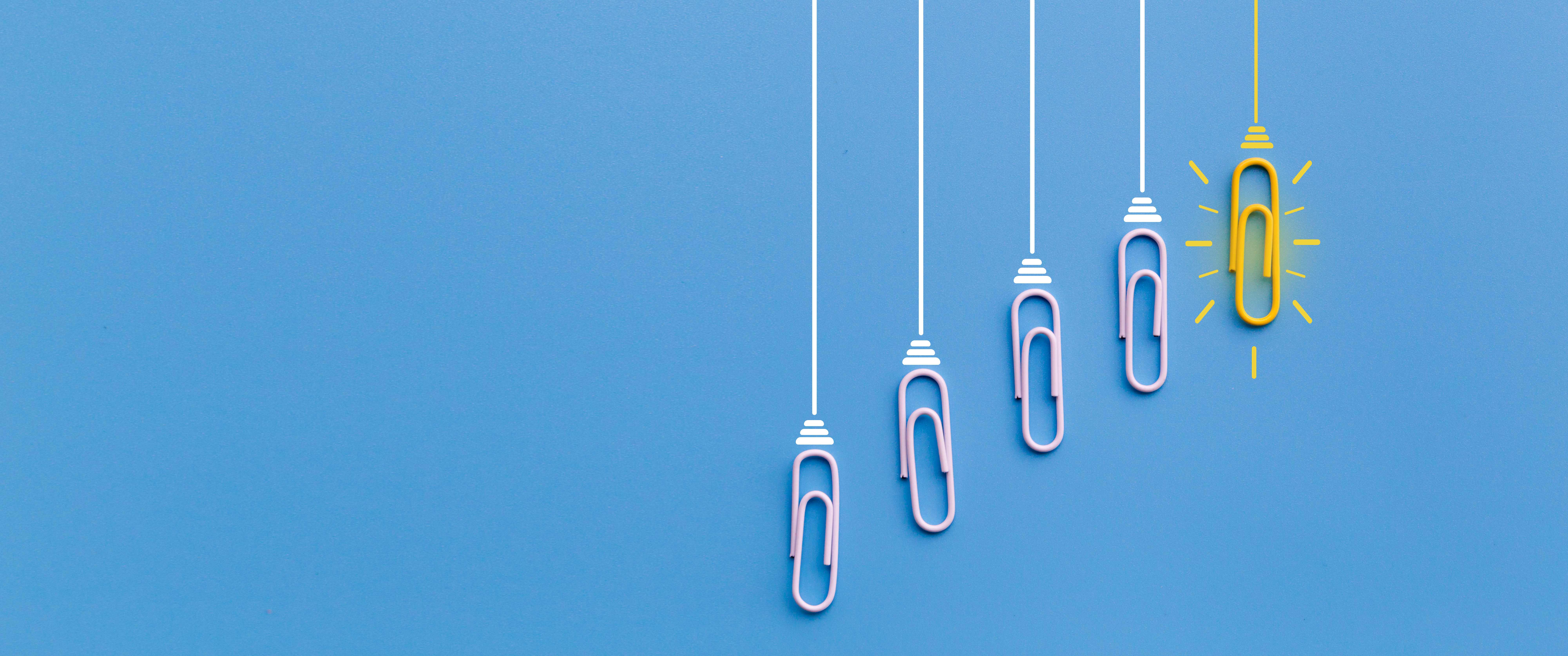We found 50 results that contain "they are more likely to respond positively when te"
Posted on: Why choose agile? Group -- edited



Posted by
about 1 year ago

Teams choose agile so they can respond to changes in the marketplace or feedback from customers quickly without derailing a year's worth of plans. "Just enough" planning and shipping in small, frequent increments lets your team gather feedback on each change and integrate it into future plans at minimal cost.
But it's not just a numbers game—first and foremost, it's about people. As described by the Agile Manifesto, authentic human interactions are more important than rigid processes. Collaborating with customers and teammates is more important than predefined arrangements. And delivering a working solution to the customer's problem is more important than hyper-detailed documentation.
An agile team unites under a shared vision, then brings it to life the way they know is best. Each team sets their own standards for quality, usability, and completeness. Their "definition of done" then informs how fast they'll churn the work out. Although it can be scary at first, company leaders find that when they put their trust in an agile team, that team feels a greater sense of ownership and rises to meet (or exceed) management's expectations.
But it's not just a numbers game—first and foremost, it's about people. As described by the Agile Manifesto, authentic human interactions are more important than rigid processes. Collaborating with customers and teammates is more important than predefined arrangements. And delivering a working solution to the customer's problem is more important than hyper-detailed documentation.
An agile team unites under a shared vision, then brings it to life the way they know is best. Each team sets their own standards for quality, usability, and completeness. Their "definition of done" then informs how fast they'll churn the work out. Although it can be scary at first, company leaders find that when they put their trust in an agile team, that team feels a greater sense of ownership and rises to meet (or exceed) management's expectations.
Posted on: #iteachmsu



Posted by
5 months ago

When to contact a doctor
A person should seek medical help if they have back pain:
that does not improve with rest
after an injury or fall
with weakness
with tingling or “pins and needles”
with unexplained weight loss
If any of the following occur alongside the pain, seek medical attention immediately:
fever
incontinence
sudden difficulty urinating or having bowel movements
numbness anywhere in the body
a lump or swelling on the back
A person should seek medical help if they have back pain:
that does not improve with rest
after an injury or fall
with weakness
with tingling or “pins and needles”
with unexplained weight loss
If any of the following occur alongside the pain, seek medical attention immediately:
fever
incontinence
sudden difficulty urinating or having bowel movements
numbness anywhere in the body
a lump or swelling on the back
Justice and Belonging
Posted on: Why choose agile? Group -- edited


Posted by
about 1 year ago
Edited-- Teams choose agile so they can respond to changes in the marketplace or feedback from customers quickly without derailing a year's worth of plans. "Just enough" planning and shipping in small, frequent increments lets your team gather feedback on each change and integrate it into future plans at minimal cost.
But it's not just a numbers game—first and foremost, it's about people. As described by the Agile Manifesto, authentic human interactions are more important than rigid processes. Collaborating with customers and teammates is more important than predefined arrangements. And delivering a working solution to the customer's problem is more important than hyper-detailed documentation.
An agile team unites under a shared vision, then brings it to life the way they know is best. Each team sets their own standards for quality, usability, and completeness. Their "definition of done" then informs how fast they'll churn the work out. Although it can be scary at first, company leaders find that when they put their trust in an agile team, that team feels a greater sense of ownership and rises to meet (or exceed) management's expectations.
But it's not just a numbers game—first and foremost, it's about people. As described by the Agile Manifesto, authentic human interactions are more important than rigid processes. Collaborating with customers and teammates is more important than predefined arrangements. And delivering a working solution to the customer's problem is more important than hyper-detailed documentation.
An agile team unites under a shared vision, then brings it to life the way they know is best. Each team sets their own standards for quality, usability, and completeness. Their "definition of done" then informs how fast they'll churn the work out. Although it can be scary at first, company leaders find that when they put their trust in an agile team, that team feels a greater sense of ownership and rises to meet (or exceed) management's expectations.
Justice and Belonging
Posted on: #iteachmsu



Posted by
over 1 year ago

Natural resources are the raw materials and sources of energy that we use. Petrol, metals, soil, sand, wind, water, and everything in between are natural resources. Manufactured items such as plastic, sheet metal, fabrics, microchips, electricity and concrete are not natural resources, but are most definitely derived from natural resources.
Natural resources are the raw materials and sources of energy that we use.
Petrol, metals, soil, sand, wind, water and everything in between are natural resources. Manufactured items such as plastic, sheet metal, fabrics, microchips, electricity and concrete are not natural resources, but are most definitely derived from natural resources.
Think about the relationship between natural resources and manufactured products. In essence, we call them “natural” resources because they are things human society uses that are created (or were created in the case of fossil fuels) without human intervention.
Perpetually Renewable Resources
Perpetually renewable resources are the easiest resources to understand; these are natural resources that are constantly replenished by the Sun’s and Earth’s natural processes. For example, every day the sun delivers an average of 198 Watts of energy to every square meter (m
) of the Earth’s surface. For comparison a standard incandescent light bulb in a bedside lamp uses 40 Watts, or a 100kg person climbing a step in 2 seconds uses roughly 200 Watts. Every day without fail for the last 5 billion years (plus or minus a few hundred million years) the Sun has delivered this solar energy.
Together with geothermal energy (heat from the Earth’s interior), the Sun’s perpetual energy powers the winds, ocean currents, precipitation and most of the Earth’s plant life. Solar and geothermal natural resources currently energise a significant and growing percentage of many nations’ electrical grids. It is perpetually renewable in the sense that no matter how much we use in terms of human time-scales (e.g decades to millennia), the Sun and the Earth will always make more.
Intermediate Renewable Resources
Intermediate renewable resources are only renewable resources if we don’t use them too quickly. They are resources such as freshwater, soil, crops and trees for timber. If we didn’t use them, they would be perpetually renewable, but because they require time (on human time-scales) to regenerate or grow, we can overuse them until they are no longer available.
Freshwater is a great example of an intermediate renewable resource. Through the water cycle, the sun evaporates water from the surface of saltwater oceans that travels over land and falls back to earth as freshwater rain. This rain fills the lakes, rivers and aquifers we use for agriculture, industry and drinking water. If we use this freshwater at the same rate as the rain recharging it, then we won’t run out. If we use the freshwater faster than it recharges, then we will. Intermediate renewable resources must be carefully managed to ensure they are not depleted.
Non-renewable Resources
The last category of natural resources are the non-renewables. These are resources that will not regenerate on human time-scales. Once they have been depleted they will no longer be available and no more will be made. The most common examples of non-renewable resources are fossil fuels, so-called because most were created by processes that take millions of years. Fossil fuels include crude oil, natural gas, coal and uranium. Other non-renewable resources include metals, lithium and rare-Earth elements (REE’s), but it’s important to remember that while we may eventually run out of mineable metals and REE’s, with careful waste management, these can be recovered through recycling. However, it is not the same for fossil fuels as using them for energy alters their chemistry so they are no longer useful.
Natural resources are the raw materials and sources of energy that we use.
Petrol, metals, soil, sand, wind, water and everything in between are natural resources. Manufactured items such as plastic, sheet metal, fabrics, microchips, electricity and concrete are not natural resources, but are most definitely derived from natural resources.
Think about the relationship between natural resources and manufactured products. In essence, we call them “natural” resources because they are things human society uses that are created (or were created in the case of fossil fuels) without human intervention.
Perpetually Renewable Resources
Perpetually renewable resources are the easiest resources to understand; these are natural resources that are constantly replenished by the Sun’s and Earth’s natural processes. For example, every day the sun delivers an average of 198 Watts of energy to every square meter (m
) of the Earth’s surface. For comparison a standard incandescent light bulb in a bedside lamp uses 40 Watts, or a 100kg person climbing a step in 2 seconds uses roughly 200 Watts. Every day without fail for the last 5 billion years (plus or minus a few hundred million years) the Sun has delivered this solar energy.
Together with geothermal energy (heat from the Earth’s interior), the Sun’s perpetual energy powers the winds, ocean currents, precipitation and most of the Earth’s plant life. Solar and geothermal natural resources currently energise a significant and growing percentage of many nations’ electrical grids. It is perpetually renewable in the sense that no matter how much we use in terms of human time-scales (e.g decades to millennia), the Sun and the Earth will always make more.
Intermediate Renewable Resources
Intermediate renewable resources are only renewable resources if we don’t use them too quickly. They are resources such as freshwater, soil, crops and trees for timber. If we didn’t use them, they would be perpetually renewable, but because they require time (on human time-scales) to regenerate or grow, we can overuse them until they are no longer available.
Freshwater is a great example of an intermediate renewable resource. Through the water cycle, the sun evaporates water from the surface of saltwater oceans that travels over land and falls back to earth as freshwater rain. This rain fills the lakes, rivers and aquifers we use for agriculture, industry and drinking water. If we use this freshwater at the same rate as the rain recharging it, then we won’t run out. If we use the freshwater faster than it recharges, then we will. Intermediate renewable resources must be carefully managed to ensure they are not depleted.
Non-renewable Resources
The last category of natural resources are the non-renewables. These are resources that will not regenerate on human time-scales. Once they have been depleted they will no longer be available and no more will be made. The most common examples of non-renewable resources are fossil fuels, so-called because most were created by processes that take millions of years. Fossil fuels include crude oil, natural gas, coal and uranium. Other non-renewable resources include metals, lithium and rare-Earth elements (REE’s), but it’s important to remember that while we may eventually run out of mineable metals and REE’s, with careful waste management, these can be recovered through recycling. However, it is not the same for fossil fuels as using them for energy alters their chemistry so they are no longer useful.
Disciplinary Content
Posted on: 12 Best API Testing Tools for 2025



Posted by
about 2 months ago

Child group post by admin:
API testing is a procedure developers use to evaluate APIs' functionality, efficacy, and security. Before releasing their software, the results of API testing will inform developers if problem fixes and patches are required. They accomplish this through a simulation that entails sending queries that would reach the API when it is accessible to its users, regardless of whether it is authentic. They observe the API to determine how it will react to this volume of queries. If the results are positive, integrating the API is secure. If not, they will be required to fix it.
API testing is a procedure developers use to evaluate APIs' functionality, efficacy, and security. Before releasing their software, the results of API testing will inform developers if problem fixes and patches are required. They accomplish this through a simulation that entails sending queries that would reach the API when it is accessible to its users, regardless of whether it is authentic. They observe the API to determine how it will react to this volume of queries. If the results are positive, integrating the API is secure. If not, they will be required to fix it.
Justice and Belonging
Posted on: Smoke test group



Posted by
2 months ago

A healthy diet chart typically includes a variety of foods from different food groups, emphasizing fruits, vegetables, whole grains, lean proteins, and healthy fats. It also focuses on portion control and mindful eating. A sample 7-day diet chart could include options like oatmeal with berries and nuts for breakfast, grilled chicken salad for lunch, and salmon with sweet potatoes for dinner.
Here's a more detailed breakdown of what a healthy diet chart might look like, including examples of meals:
Key Components of a Healthy Diet:
Fruits and Vegetables: Aim for a variety of colors and types. They are rich in vitamins, minerals, fiber, and antioxidants.
Whole Grains: Choose brown rice, quinoa, oats, whole-wheat bread, and other whole grains over refined grains.
Lean Proteins: Include sources like chicken, fish, beans, lentils, tofu, and low-fat dairy products.
Healthy Fats: Opt for sources like avocados, nuts, seeds, and olive oil.
Hydration: Drink plenty of water, and limit sugary drinks.
Limit Processed Foods, Sugary Drinks, and Saturated Fats: These can contribute to health problems.
Here's a more detailed breakdown of what a healthy diet chart might look like, including examples of meals:
Key Components of a Healthy Diet:
Fruits and Vegetables: Aim for a variety of colors and types. They are rich in vitamins, minerals, fiber, and antioxidants.
Whole Grains: Choose brown rice, quinoa, oats, whole-wheat bread, and other whole grains over refined grains.
Lean Proteins: Include sources like chicken, fish, beans, lentils, tofu, and low-fat dairy products.
Healthy Fats: Opt for sources like avocados, nuts, seeds, and olive oil.
Hydration: Drink plenty of water, and limit sugary drinks.
Limit Processed Foods, Sugary Drinks, and Saturated Fats: These can contribute to health problems.
Justice and Belonging
Posted on: Introduce Books, Storytelling And Narration, Books play a vital role in both brain development


Posted by
over 1 year ago
Introduce Books, Storytelling And Narration -- Edited
Books play a vital role in both brain development and language skills. They’re also the first step towards gross motor skill development (holding books, turning pages). I had introduced cloth books & soft sponge books to her when she was two months old, board books from five months, and paper books after she turned a year old. She liked colourful objects, animals, birds & shapes till around nine months and then loved listening to simple short stories from illustrated books (no fairy tales). And activity books (match the shadows, pairing similar objects) after she turned 2.
3. Ask Questions To Stimulate The Thinking Process
As I introduced the books, I named the objects she was seeing in all the languages I knew. Then I gradually started describing them (shape, colour, use). I explained the environment in which they are found and constantly asked her questions. For example, pointing at a rabbit, instead of asking “what is this?” I asked her, “it has long ears, a short fluffy tail, is soft & white like cotton. What is it?”. I continued with the exercise even when we went out to some shop or mall. We played the “I spy” game in the house & outdoors. I would describe objects and ask her to identify them. It was fun.
4. Let Your Kids Explore - Touch, Feel, Smell, Taste
I encouraged the natural tendency that kids have to explore the world around them. (But of course, with discretion). I never stopped her from playing with stones or mud in the garden, things like tasting sour lime or bitter gourd, smell a flower on the plant, etc. She learned by herself that stones were hard, mud was soft, ice was cold, the paper could be torn with hands and rubber bands were elastic & so on. Things that were not safe for her we explained to her & kept out of reach- like touching a hot cup of tea could burn her skin, pressing against a glass door could break the glass, playing with a sharp object could hurt, etc.
5. Music-Dance-Physical Activity
Kids love music & I was not surprised the other day when she sang the whole song “lakdi ki kathi, kathi pe ghoda” and danced to the tune as well. She now sings quite a few songs & rhymes. It seems like she has a good ear for music because she has been listening to it since childhood. I also noticed that a soothing instrumental piece calms her down whereas a song like “lungi dance” excites her. So, dance becomes an excellent physical activity to channelise the never-ending energy of a kid, and singing & listening to songs becomes a great mental activity. ---- Edited
Books play a vital role in both brain development and language skills. They’re also the first step towards gross motor skill development (holding books, turning pages). I had introduced cloth books & soft sponge books to her when she was two months old, board books from five months, and paper books after she turned a year old. She liked colourful objects, animals, birds & shapes till around nine months and then loved listening to simple short stories from illustrated books (no fairy tales). And activity books (match the shadows, pairing similar objects) after she turned 2.
3. Ask Questions To Stimulate The Thinking Process
As I introduced the books, I named the objects she was seeing in all the languages I knew. Then I gradually started describing them (shape, colour, use). I explained the environment in which they are found and constantly asked her questions. For example, pointing at a rabbit, instead of asking “what is this?” I asked her, “it has long ears, a short fluffy tail, is soft & white like cotton. What is it?”. I continued with the exercise even when we went out to some shop or mall. We played the “I spy” game in the house & outdoors. I would describe objects and ask her to identify them. It was fun.
4. Let Your Kids Explore - Touch, Feel, Smell, Taste
I encouraged the natural tendency that kids have to explore the world around them. (But of course, with discretion). I never stopped her from playing with stones or mud in the garden, things like tasting sour lime or bitter gourd, smell a flower on the plant, etc. She learned by herself that stones were hard, mud was soft, ice was cold, the paper could be torn with hands and rubber bands were elastic & so on. Things that were not safe for her we explained to her & kept out of reach- like touching a hot cup of tea could burn her skin, pressing against a glass door could break the glass, playing with a sharp object could hurt, etc.
5. Music-Dance-Physical Activity
Kids love music & I was not surprised the other day when she sang the whole song “lakdi ki kathi, kathi pe ghoda” and danced to the tune as well. She now sings quite a few songs & rhymes. It seems like she has a good ear for music because she has been listening to it since childhood. I also noticed that a soothing instrumental piece calms her down whereas a song like “lungi dance” excites her. So, dance becomes an excellent physical activity to channelise the never-ending energy of a kid, and singing & listening to songs becomes a great mental activity. ---- Edited
Posted on: #iteachmsu



Posted by
over 1 year ago

Triglycerides
Triglycerides are fats and oils
Fatty acid and glycerol molecules are the components that make up triglycerides
Fats and oils have a number of important functions in organisms: energy storage, insulation, buoyancy, and protection
Energy storage
The long hydrocarbon chains in triglycerides contain many carbon-hydrogen bonds with little oxygen (triglycerides are highly reduced)
So when triglycerides are oxidised during cellular respiration this causes these bonds to break releasing energy used to produce ATP
Triglycerides, therefore, store more energy per gram than carbohydrates and proteins (37kJ compared to 17kJ)
As triglycerides are hydrophobic they do not cause osmotic water uptake in cells so more can be stored
Plants store triglycerides, in the form of oils, in their seeds and fruits. If extracted from seeds and fruits these are generally liquid at room temperature due to the presence of double bonds which add kinks to the fatty acid chains altering their properties
Mammals store triglycerides as oil droplets in adipose tissue to help them survive when food is scarce (e.g. hibernating bears)
The oxidation of the carbon-hydrogen bonds releases large numbers of water molecules (metabolic water) during cellular respiration
Desert animals retain this water if there is no liquid water to drink
Bird and reptile embryos in their shells also use this water
Triglycerides are fats and oils
Fatty acid and glycerol molecules are the components that make up triglycerides
Fats and oils have a number of important functions in organisms: energy storage, insulation, buoyancy, and protection
Energy storage
The long hydrocarbon chains in triglycerides contain many carbon-hydrogen bonds with little oxygen (triglycerides are highly reduced)
So when triglycerides are oxidised during cellular respiration this causes these bonds to break releasing energy used to produce ATP
Triglycerides, therefore, store more energy per gram than carbohydrates and proteins (37kJ compared to 17kJ)
As triglycerides are hydrophobic they do not cause osmotic water uptake in cells so more can be stored
Plants store triglycerides, in the form of oils, in their seeds and fruits. If extracted from seeds and fruits these are generally liquid at room temperature due to the presence of double bonds which add kinks to the fatty acid chains altering their properties
Mammals store triglycerides as oil droplets in adipose tissue to help them survive when food is scarce (e.g. hibernating bears)
The oxidation of the carbon-hydrogen bonds releases large numbers of water molecules (metabolic water) during cellular respiration
Desert animals retain this water if there is no liquid water to drink
Bird and reptile embryos in their shells also use this water
Navigating Context
